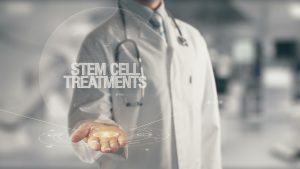31 Mar A Closer Look at the Mechanics of Stem Cell Therapy in California
Stem cell therapy refers to using the body‘s regenerative cells to treat or reduce symptoms of a particular condition or disease. In 2016, there was only one established therapy hematopoietic stem cell transplantation that leveraged stem cells. The therapy is a type of bone marrow transplantation to repair damaged or diseased tissues in the afflicted area.
However, studies are underway to create or develop numerous sources to apply stem cell treatments. Recent researches show the effectiveness of stem cells for medical ailments such as cardiovascular diseases and diabetes. Plus, San Francisco stem cell therapy has also shown benefits for many neurodegenerative diseases.
Stem Cells: What They Do
To understand how stem cell mechanics help you improve health without any painful surgical process, you must know what stem cells are and what they do. Stem cells are the raw material of your body that generates other cells with particular functions.
These specialized cells divide into multiple daughter cells when provided the right conditions by the San Francisco stem cell treatment center. These daughter cells become or transform into new stem cells after self-renewal. The specialized cells have more specific functions when they differentiate into blood cells, heart muscle cells, brain cells, or bone cells. There are no other cells in the body with a natural ability to produce new cells.

Mechanics of Stem Cell Therapy
According to experts, stem cells mediate repair through five basic mechanisms.
- Provide an anti-inflammatory effect
- Home to damaged tissues and recruit other cells, including endothelial progenitor cells (essential for tissue growth)
- Support tissue remodeling to stimulate scar formation
- Inhibit apoptosis
- Differentiate into bone, tendon, cartilage, and ligament tissue
Stem cells also play an essential role in enriching blood supply to the afflicted and damaged areas. The improved blood supply consequently promotes tissue generation and platelet-rich plasma in conjunction with cell transplantation.
The methods of delivery may affect the efficacy of the stem cell population. For example, stem cell experts introduce the cells in a scaffold to regenerate bone. This is where they produce the mineral, which is crucial for generating functional bone.
Moreover, studies show that stem cells contain low immunogenicity as they have a less quantity of MHC molecules on the surface. The stem cells are also present in secrete chemokines, which have the ability to alter or change the immune response. The quality can also promote tolerance of newly regenerated tissues.
Summing Up
In conclusion, stem cell therapy is an excellent way to generate healthy and functional cells. Under the right conditions, they can replace damaged cells. Their mechanics include reducing inflammation, promoting repair, supporting diseased tissue remodeling, and multiplying into specialized cells.
Thus, stem cell therapy can be beneficial for relieving chronic pain and promoting overall health through its mechanics.


No Comments